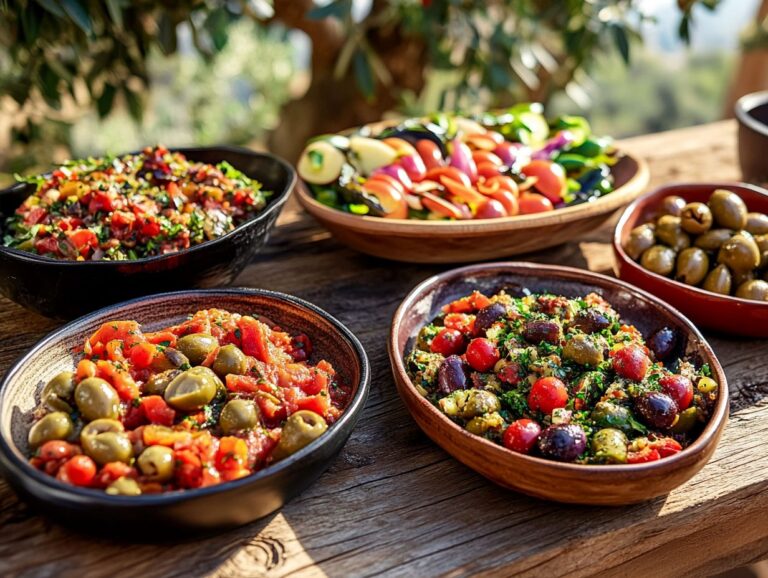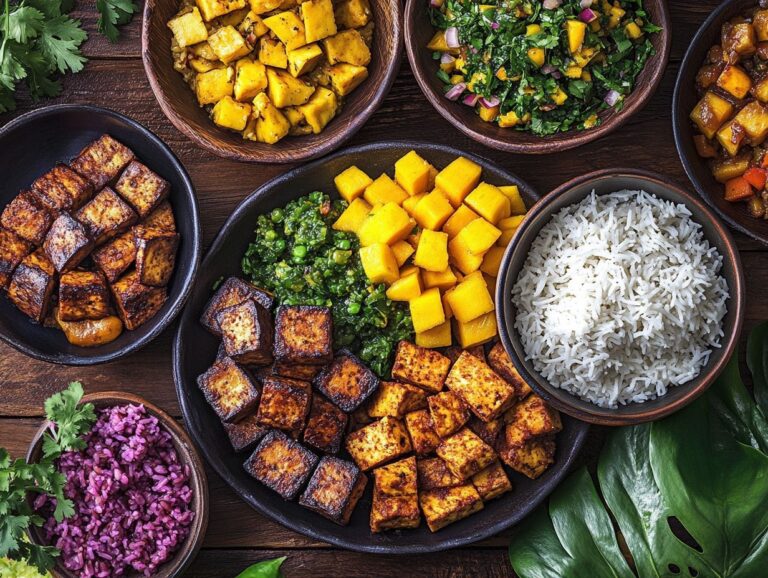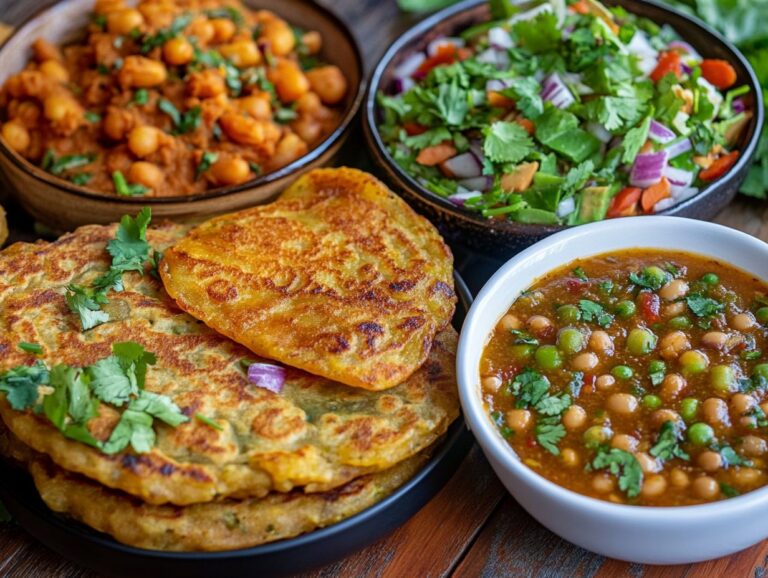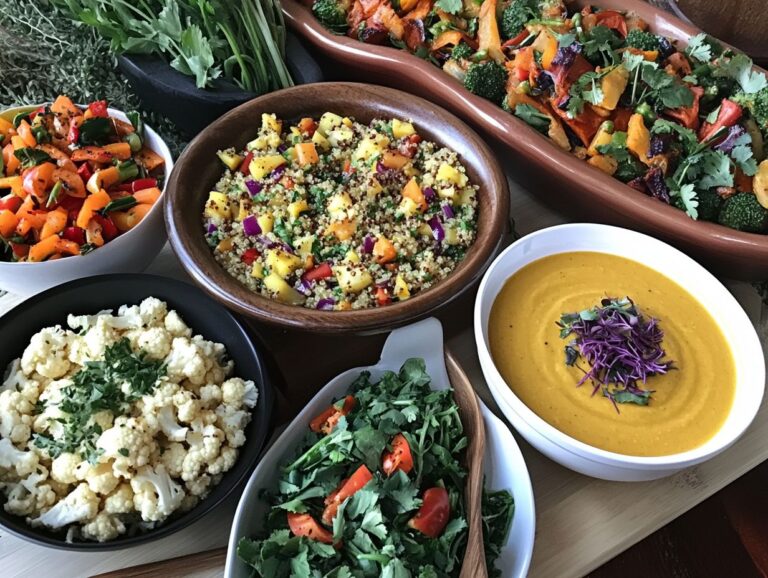Navigating the world of diet can be challenging, particularly when managing issues such as acid reflux. Adopting a low-acid diet can significantly alleviate discomfort and enhance stomach comfort and digestive health. This article examines the relationship between a low-acid diet and veganism, emphasizing the advantages of plant-based meals and vegan recipes for individuals seeking relief from acid-related ailments. You will discover delicious low-acid vegan recipes, practical meal planning tips, and advice for dining out, making it easier to embrace a lifestyle focused on stomach comfort, digestive wellness, and overall wellness. Join us as we embark on a flavorful journey toward better health!
The Importance of a Low Acid Diet
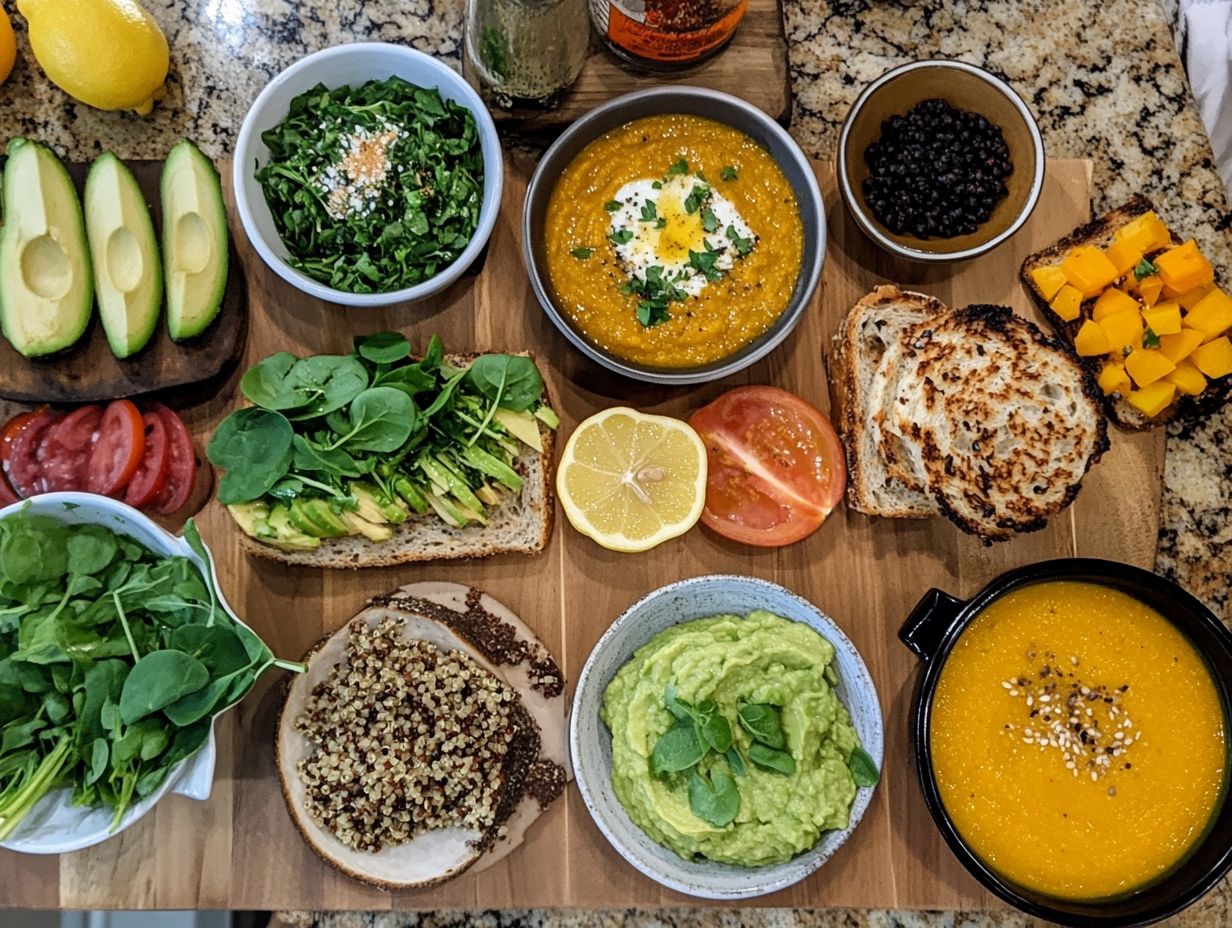
A low-acid diet is essential for individuals with acid reflux and other digestive health issues, as it helps alleviate discomfort and fosters a properly balanced gut environment.
By focusing on low-acidity food options and incorporating alkaline foods into meals, one can mitigate the effects of heartburn symptoms while enhancing overall health.
This approach is particularly beneficial for those who are mindful of their diets and seek stomach comfort while enjoying nutritious, plant-based, anti-inflammatory meals.
Understanding Acid Reflux and Its Triggers
Acid reflux is a condition in which stomach acid flows back into the esophagus, causing irritation and discomfort. The triggers of acid reflux can significantly impact a person’s quality of life.
Common triggers include certain foods, food intolerances, and lifestyle choices. Identifying and avoiding these triggers can lead to improved digestive health. While high-fiber foods are generally healthy, some individuals may experience discomfort from specific sensitivities to certain grains or legumes that can ferment in the stomach.
Additionally, common food intolerances, particularly dairy and gluten, can exacerbate reflux symptoms by causing inflammation or delaying digestion, highlighting the importance of allergy-friendly ingredient substitutions.
Practicing mindful eating habits—such as taking the time to savor meals instead of rushing through them—can further enhance digestion and help prevent reflux. Avoiding overeating is also beneficial.
Incorporating digestive enzymes and probiotics may aid in breaking down food more efficiently, thereby reducing the likelihood of reflux episodes. By addressing these various contributory factors, individuals can better manage this condition and improve their overall digestive health and immune support.
Veganism and Low Acid Eating
A vegan diet can seamlessly align with a low-acid diet, as it includes many plant-based meals that support digestive health and overall well-being.
A vegan low-acid diet consists of low-acidity foods that help alleviate symptoms of acid reflux while featuring nutrient-dense, whole foods made from whole ingredients.
The Benefits of a Vegan Diet for Stomach Health
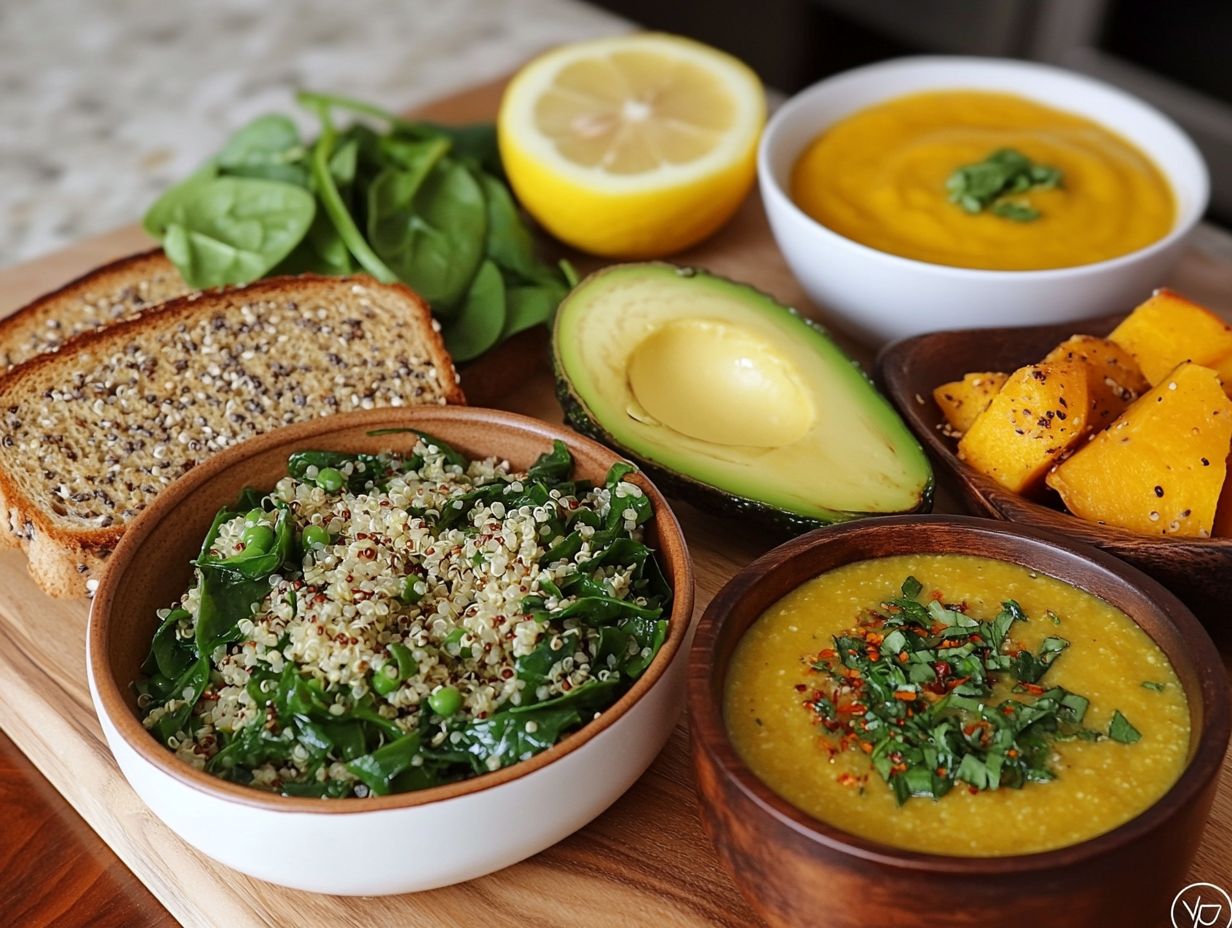
The vegan diet offers numerous benefits for digestive health, featuring gut-friendly recipes that promote good digestion and nutrient absorption while minimizing discomfort from acid reflux.
Foods high in fiber, antioxidants, and probiotics in plant-based diets support a healthy gut microbiome, which is essential for overall wellness and stomach comfort. Incorporating a significant amount of fiber into vegan recipes can greatly enhance the digestive tract by preventing constipation and encouraging regularity.
Fermented foods containing probiotics, such as yogurt alternatives and kimchi, help maintain a balanced flora in the gut. Additionally, soothing foods like bananas and oatmeal can reduce inflammation and promote stability.
Preparing colorful and nutrient-dense recipes, such as a hearty lentil stew or quinoa salad, encourages mindful cooking and enhances the enjoyment of eating while prioritizing stomach health and low-acid comfort food.
Low Acid Vegan Recipes
Exploring low-acid vegan recipes supports dietary preferences and promotes digestive health by incorporating nutrient-rich ingredients and healthy cooking methods.
With a wide range of low-acid foods available, these recipes can create delicious and satisfying meals that ensure stomach comfort.
Breakfast Ideas
Starting the day with a low-acid breakfast is beneficial for digestive health. Breakfast ideas featuring low-acid ingredients such as oatmeal, bananas, and chia seeds can be both nutritious and delicious. Low-acid foods are easier for the stomach to digest and provide essential nutrition in the morning.
By experimenting with different preparations of these ingredients, one can create appealing breakfast ideas that tantalize the taste buds with simple recipes.
For example, combining prepared oatmeal with sliced bananas and chia seeds can enhance the fiber content of breakfast, which is crucial for good digestion. To sweeten the dish without introducing high acidity, honey can be added.
Another tasty option is to blend almond milk—one of the lowest-acid milk alternatives—with frozen spinach, a ripe banana, and a scoop of chia seeds to create a smoothie that is low in acid yet rich in protein and healthy omega-3 fatty acids.
Such recipes invite creativity in the kitchen and provide an opportunity for individuals to share their favorite low-acid breakfast ideas, incorporating or substituting nutritious low-acid ingredients.
Lunch and Dinner Options
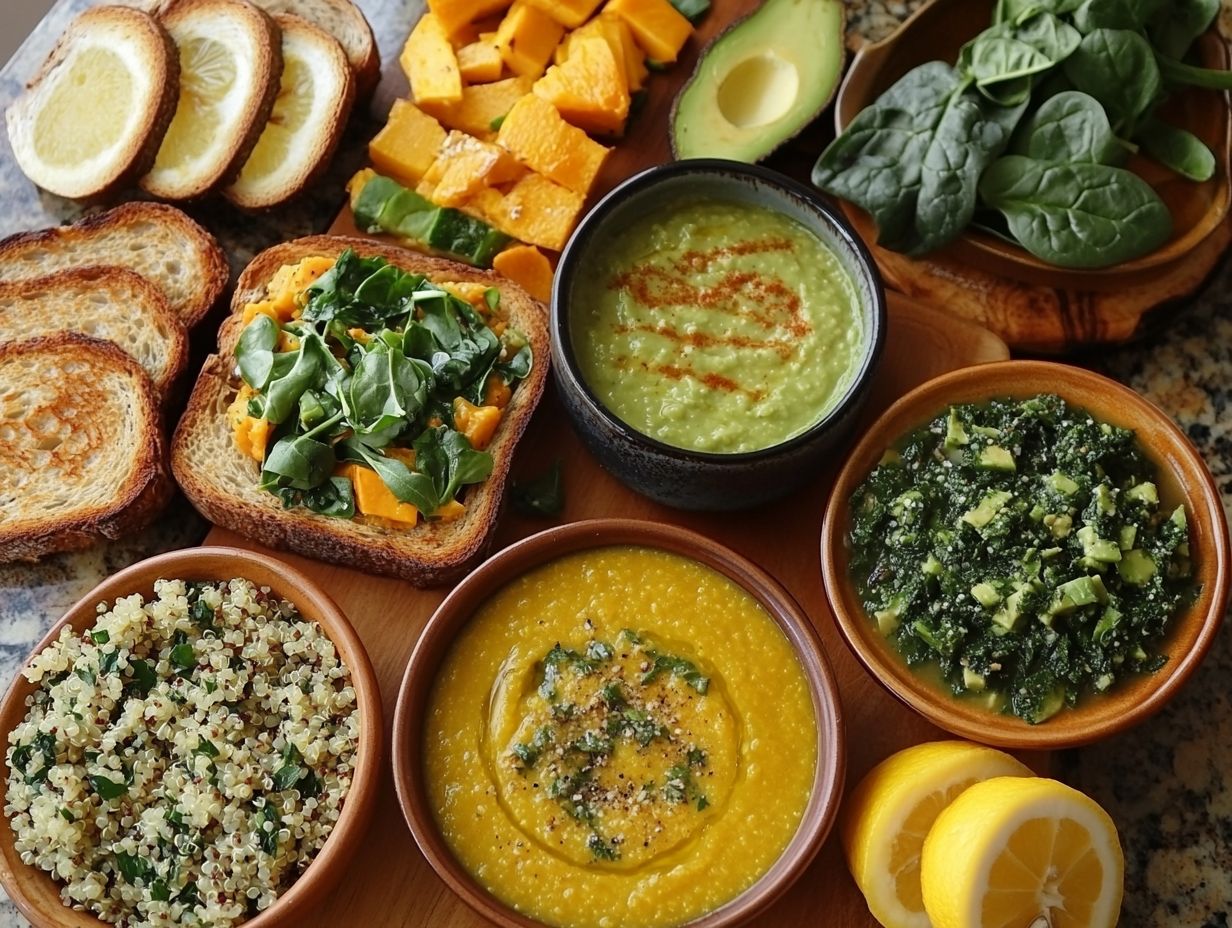
Low-acid foods for lunch recipes and dinner options can include quinoa paired with steamed vegetables, creating a filling and healthy meal that supports digestive health and is entirely plant-based. These combinations help meet caloric needs effectively.
Incorporating gluten-free grains, such as millet or brown rice, further expands meal options, allowing individuals to experiment with diverse textures and flavors, including whole grains and fresh vegetables. Seasonal ingredients, like fresh bell peppers or zucchini, contribute color and essential vitamins to the meal, supporting a balanced meal and healthy eating.
Cooking methods such as sautéing with olive oil or roasting can enhance the natural sweetness of the vegetables. Additionally, culinary herbs like basil, thyme, and rosemary not only add flavor but also offer a range of health benefits, making these meals excellent choices for those following a low-acid diet with comforting flavors.
Snack and Dessert Recipes
Healthy snacks and desserts suitable for a low acid diet can be easily made and enjoyed. Recipes for these snacks and desserts incorporate comforting foods like applesauce and sweet potatoes, which not only taste good but also feel satisfying.
Here are some healthy snack and dessert recipes for a low acid diet:
- Energy Balls with Oats
- Banana Ice Cream with Coconut Milk
- Energizing Sweet Potato Pudding with Almond Milk
- Potato Pancakes
- Snack Balls with Dried Fruit and Nuts
To help create these healthy snacks and desserts, here are the ingredients categorized for a low acid diet:
- Base Carbohydrates: Oats, almond flour, whole wheat flour, and potatoes (especially sweet potatoes).
- Fats: Almond butter, peanut butter, coconut milk, and olive oil.
- Dairy: Yogurt and milk (almond milk, coconut milk).
- Protein: Nuts (almonds, walnuts, sunflower seeds, pumpkin seeds) and eggs.
- Sweeteners: Honey, maple syrup, bananas, and dates.
- Fruit: Apples, bananas, mangoes, and blueberries.
- Vegetables: Sweet potatoes and regular potatoes.
- Legumes: Lentils, chickpeas, and beans.
Some examples of healthy snacks and desserts that fit within a low acid diet include:
- Energy Balls: A mix of oats, almond butter, honey, and a variety of seeds or dried fruits creates a no-bake snack that is easy to prepare and provides sustained energy.
- Banana Ice Cream: Freezing ripe bananas and blending them with a splash of coconut milk results in a creamy, dairy-free dessert that is high in potassium.
- Sweet Potato Pudding: Boiling and mashing sweet potatoes with almond milk, cinnamon, and a sweetener of your choice creates a comforting, nutrient-rich snack.
- Potato Pancakes: Grated potatoes mixed with eggs and minimal seasoning make for a savory snack that pairs well with low-acid toppings.
- Snack Balls with Dried Fruits and Nuts: Blending dates or figs with a variety of nuts and seeds results in a nutrient-dense snack that is high in fiber and healthy fats.
Tips for Incorporating Low Acid Vegan Meals into Your Diet
Incorporating low-acid vegan meals into your diet is achievable through strategic meal planning and mindful eating practices that promote digestive health and overall well-being.
By practicing proper food pairings and ensuring a balance of nutrients, you can enjoy delicious meals while effectively managing acid reflux symptoms with mindful eating.
Meal Planning and Preparation
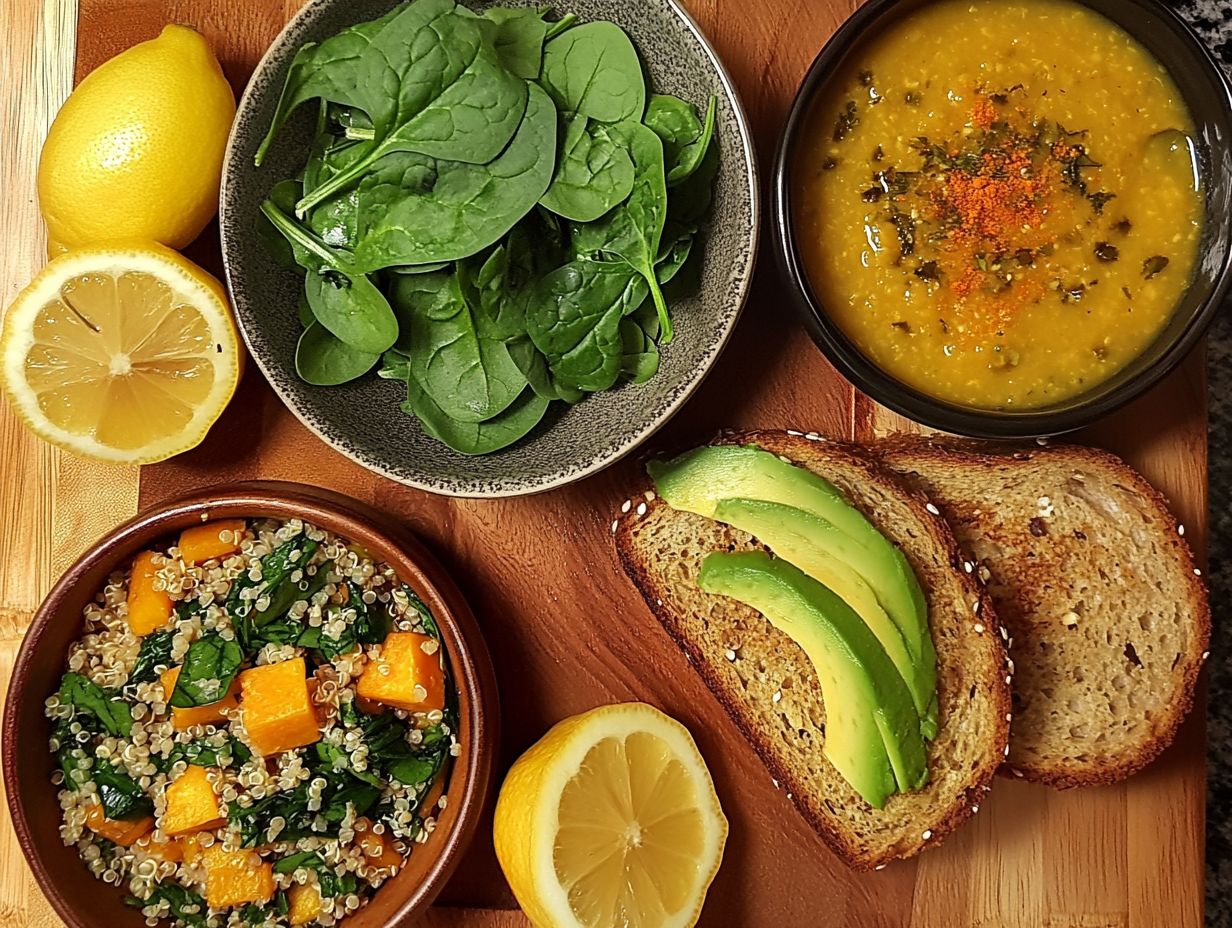
Meal planning for a low-acid diet is essential as it helps organize grocery shopping and meal prep for the week, ensuring that healthy low-acid foods are readily available for vegan cooking.
Cooking food in various ways, using different cooking techniques, can enhance the flavors of nutritious ingredients and make meal prep enjoyable. To begin, one should focus on purchasing and preparing low-acid foods such as leafy greens, bananas, and quinoa, which provide essential nutrients and support overall digestive health with plant-based protein sources.
Next, it is important to choose cooking methods that align with a vegan lifestyle; steaming, roasting, and stir-frying are ideal as they preserve the consistency of the ingredients while maximizing flavor with light salads and soups.
Finally, implementing kitchen hacks like batch cooking, meal prepping in jars, and blending spices can help streamline the meal prep process. These methods encourage creativity in the kitchen and allow for the exploration of new and exciting flavors in vegan recipes while ensuring that meals are satisfying and adhere to dietary guidelines. Incorporating fresh vegetables and whole grains can enhance gut-friendly and nutrient-dense meals that promote digestive wellness.
Substitutions and Modifications
Making substitutions and modifications in recipes can effectively adapt meals to fit a low-acid vegan diet, allowing you to enjoy a variety of flavors while ensuring digestive comfort and stomach comfort. Emphasizing low acidity in meals contributes to digestive health and promotes soothing meals that are easy on the system.
Utilizing seasoning alternatives and plant-based protein options can enhance nutrient density without compromising taste. For example, instead of using traditional tomato sauce or vinegar, you can incorporate roasted red peppers or fresh herbs like basil and oregano, which add depth and mild flavors without increasing acidity. Exploring vegan cooking techniques and whole foods helps maintain balanced meals and enhances flavor combinations.
Likewise, citrus juices can be replaced with creamy avocado or coconut yogurt, providing both a rich texture and a unique twist. It’s important to experiment with different herbs and spices to discover combinations that resonate best with your palate and offer comfort food experiences. Engaging with culinary herbs and spices supports healthy eating and elevates vegan ingredients in recipes for digestion.
This not only enhances the dish but also promotes mindful cooking, encouraging an appreciation for the layers of flavor and nutrition found in plant-based ingredients. Utilizing fiber-rich foods and simple recipes plays a crucial role in creating reflux-friendly and comforting meals, which are key for allergy-friendly dining and immune support.
Eating Out on a Low Acid Vegan Diet
Guidelines for Dining Out on a Low Acid Vegan Diet
Eating out while following a low acid vegan diet can be challenging; however, with some tips and tricks, you can navigate menus and make choices that align with your dietary needs. Understanding how to communicate your preferences and request modifications will enable you to enjoy your dining experience while prioritizing the health of your digestive system. Opting for low-fat options and probiotic-rich fermented foods can aid in maintaining digestive enzymes and promote digestive wellness.
Navigating Menus and Making Requests
Successfully navigating restaurant menus while following a low-acid vegan diet requires the ability to identify suitable dishes and make specific requests to ensure your dietary needs are met. By employing these strategies, you can enjoy dining out without compromising your digestive health.
The first strategy is to inquire about the preparation methods and ingredients of various dishes. For instance, if a salad appears on the menu, ask whether it can be made without lemon or vinegar-based dressings, which are high in acidity. You might phrase your request as, “Could I get this with an oil-based dressing instead?” This wording conveys a preference rather than implying a dietary restriction. Additionally, don’t hesitate to ask if higher-acid ingredients, such as tomatoes, can be substituted with lower-acid options like cucumbers or avocados. Exploring ingredient substitutions with seasonal ingredients and opting for anti-inflammatory, gut-friendly meals contributes to overall digestive wellness.
Clear communication with the restaurant staff is essential, and they are often more than happy to help you create a meal that aligns with your low-acid diet.
